It’s that time of year when fishermen gather in Bristol Bay, Alaska for the largest sockeye salmon run in the world.
We can’t take all of you with us to experience what it’s like to fish the salmon (the boat is just too small). But we can share some of the highlights with you! Read on to discover what is happening right now in Naknek, AK as Steve and thousands of others prepare for the epic return of the salmon to Bristol Bay.
Fishing Starts With Flying
Before the fishing can start the crew has to first get to Alaska.
This year it means 20+ hours of flying and waiting in airports.
First there’s a flight from Newark to Los Angeles. Then a flight from Los Angeles to Anchorage. Then a long overnight wait at the Anchorage airport followed by a final, quick flight to King Salmon, AK. From there the crew hops in a taxi and drives 10 miles to Naknek, AK and the boatyard.
Once in Naknek the taxi takes them straight to the boatyard. After 20+ hours of travel the final step is to hop out of the taxi and crawl up an aluminum ladder into the F/V Ava Jane. No rest for the weary. It’s straight to work!
Gearing Up the Boat
Opening up a fishing vessel like the F/V Ava Jane is like opening up an RV that’s been sitting all winter. It takes about a week to prepare the boat before the crew heads out to fish.

Preparing the Boat for Operations
- It's imperative to avoid breaking down while the crew is out fishing. They check all moving parts of the boat to ensure prime working condition.
Prepare the Nets
- Next the nets are prepared and loaded on board.
- This work includes adding new mesh (the lightweight twine that catches the salmon) between the top line (the cork line) and the lead line.
- The top line (cork line) floats on the surface of the water. The lead line has lead components (thus the name) to weigh down the bottom of the net.
- All commercial fishing boats for the Bristol Bay Sockeye Salmon Run use gill netting as per the permits. These boats are known as drift boats and the fishing technique is also referred to as drift gill netting. (Steve and Jenn Kurian first discovered the magic of the Bristol Bay run back in 2002 when they spent the summer in Naknek as set netters.)
- Any remaining fishing gear is also loaded on board with the nets.

Outfit the Boat with Supplies
Once the boat is in perfect working order and all fishing gear loaded, the final prep work is to outfit the cabin with the dry food the crew will eat during the month and a half they spend on the water.
Once the crew put the boat in the water they will not return to the boatyard or leave the boat for one and a half months.
Tender boats meet each fishing boat twice a day. They bring supplies - fresh water, fuel, and frozen food. They also weigh the catch and take the fish to the processor.
The Experience of Fishing Bristol Bay
The run begins on or around June 20. Steve feels the fish may be triggered to migrate by the Summer Solstice (which occurs on June 21).
The migration mirrors what you see with geese. At first there’s a stray flock or two. A day later you might see ten flocks. Then the day comes when there are so many geese that they fill the sky. The salmon run is very similar, except it’s underwater instead of in the sky. It starts small, builds to a peak from July 4th to the 10th, and then subsides. By the end of July it’s finished.
The World’s Largest Salmon Run
For a sense of the size and scope of the run, consider these numbers:
- The salmon travel in "schools" with 10-30 fish per school.
- At the peak of the run, 200,000 to 300,000 fish will go through on a single tide (tides come in every 12 hours, twice each day).
- 1,500 fishing boats will work the run this year.
- Each boat is assigned to one of the five rivers to fish.
- 48 million salmon are expected to run this summer!
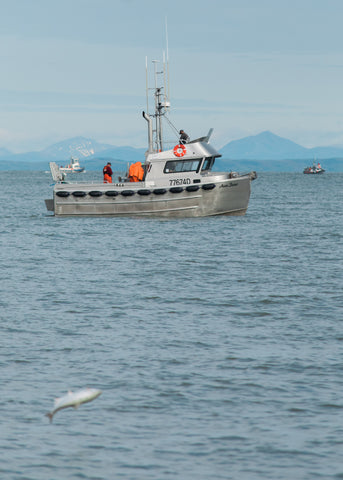
Jumping Fish
As the fish arrive in the bay you’ll see them jump up out of the water! Native lore and old wives tales offer several explanations. Maybe it’s to see where they are going, or to shake their eggs loose, or just because they are happy. Steve says it’s quite the show with 100 fish jumping into the air at a time.
Flash-Frozen to Seal the Freshness
At Wild For Salmon, you will find almost all of our seafood products are flash-frozen (also called once-frozen). As the salmon come on board the crew carefully handle them with expert skill. The fish are bled and placed in the refrigerated seawater system in the boat’s hold – instantly chilling them from 60 degrees to 32-38 degrees. Special woven nylon sacks hold the fish and are used to transfer them via the tender boats to the processor. At the processor the fish are flash frozen to lock in the freshness. You can thaw one of these fillets a year later and it’s as if you just caught it!
The flash freezing process preserves the peak of the flavor, texture, color, and nutritional content. Seafood freezes exceptionally well – the nutrients found so abundantly in fish (like protein, essential minerals and vitamins A and D) are unaffected by the freezing process. You’ll never taste Alaska seafood this fresh, unless you get it right off the boat!
Life On Board
Living quarters on the F/V Ava Jane are pretty tight! It’s similar to a small RV or camper. Very basic - bunks for the crew, a heater, and a diesel store for cooking. Plus fresh water and dry food storage. It’s so small that not all of the crew can stand up at the same time!
Each day the crew take on fuel, frozen food and fresh water from tender boats that meet up with the fishing vessel twice a day.
The crew fish around the clock, keeping to a constant daily schedule for the 4-6 week run:
- Fish one tide
- Meet the tender boat. Deliver the fish. Get fuel and fresh water.
- Anchor and take a nap for a few hours.
- Wake and start looking for fish again.
- Fish the next tide
- Repeat
While it sounds a bit grueling Steve and the crew will tell you that they love it. Yes there is hard work and sleep deprivation. But there is also a lot of fun and comradery.
They live by the tide, the fish, the weather, and the management of the run. In many ways they go back in time to the hunter/gatherer lifestyle. The equipment is more modern, but the fishermen are still hunting for the fish – trying to figure out what the fish are doing and where to catch them.

Sustainability and the Bristol Bay Sockeye Salmon Run
The Bristol Bay Sockeye Salmon Run is carefully managed for long-term sustainability by biologists from the Alaska Department of Fish and Game.
The biologists consider many factors to ensure the salmon run supports the fishing economy while maintaining the health of the salmon species for years to come:
- - Fishing vessels can’t be bigger than 32 feet long.
- - The number of fishing boats is limited to approximately 1,500.
- - Biologists calculate how many feet of net will be in use, predicting the total catch.
- - Fishing areas are established for each river with boundaries using GPS coordinates. Each area is roughly 3-5 miles wide and 10-15 miles long.
- - Fish swim into Bristol Bay from the ocean and make their way along the edges of the bay to the rivers.
- - The shared goal of the fishermen and the biologists is to catch the fish aiming for each river. This practice ensures that salmon reach the river where they spawned and that a portion of the salmon swim upriver to reproduce. Thus the whole cycle is able to repeat itself again next year and into the future.
The projection for this year’s salmon run is 48 million salmon. It’s definitely a larger than normal run (the average 20-year mean is 34.6 million).
While there are many species of salmon, the focus of this run is overwhelmingly Sockeye Salmon. The other four species make up only 5% of the total run. Chinook (King) Salmon arrive first followed by the Sockeye (Red) Salmon. The fishermen know the sockeye run is wrapping up when the Coho (Silver), Pink (Humpy) and Keta (Silverbrite or Chum) salmon arrive.
Bristol Bay Sockeye Run - By the Numbers
- 1 bay: Bristol Bay
- 4 flights: The number of flights it takes to get from Bloomsburg, PA to the F/V Ava Jane in Naknek, AK.
- 5 species: The number of salmon species in the Bristol Bay Run.
- 5 rivers: The five rivers that feed Bristol Bay. The salmon come into the bay and then swim up the river where they spawned.
- 5 weeks: The approximate length of the annual sockeye salmon run.
- 16 sacks: The number of sacks in the hold of the F/V Ava Jane. Each sack holds 16,000 lbs.
- 21: June 21st aka the Summer Solstice. After 18 years of fishing the sockeye salmon run, Steve believes the Summer Solstice is what prompts the salmon to return to the rivers where they spawned.
- 1,500 boats: The approximate number of fishing boats that will be permitted for the Bristol Bay Salmon Run.
- 200,000 fish per tide: The number of fish swimming through on a single tide at the peak of the run.
- 48 million fish: The number of salmon expected to migrate during this year’s run!

Nineteen Years
This summer marks Steve’s nineteenth year fishing the Bristol Bay Run. Two other members of the crew also work at Wild for Salmon’s headquarters in Bloomsburg, PA. The experience brings depth to the way Wild for Salmon takes care of its customers, with our own staff on the water fishing the run as well as running the business of keeping customers supplied with wild-caught Alaskan year round.
Follow along with us this month and next as we share more of the amazing experience of this incredible run on our social media accounts (Facebook and Instagram). We’ll be bringing you photos from the crew so you can see more of the behind the scenes of how we bring you superior, wild-caught sockeye salmon, fresh from the waters of Alaska to your homes. Along the way we hope you catch a little of the spirit of the “wild” that makes up Wild for Salmon.


 Wild Alaska Salmon
Wild Alaska Salmon Alaska Salmon Burgers
Alaska Salmon Burgers Smoked Salmon & Seafood
Smoked Salmon & Seafood Wild Alaska Whitefish
Wild Alaska Whitefish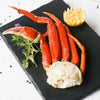 Wild Shellfish & Shrimp
Wild Shellfish & Shrimp Wild Albacore Tuna
Wild Albacore Tuna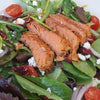 Canned Seafood
Canned Seafood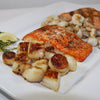 Meal Box & Samplers
Meal Box & Samplers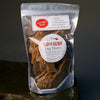 Pet Products
Pet Products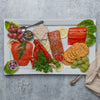 Gifts
Gifts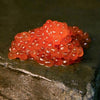 Specialty
Specialty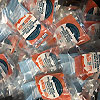 Wholesale Ordering
Wholesale Ordering